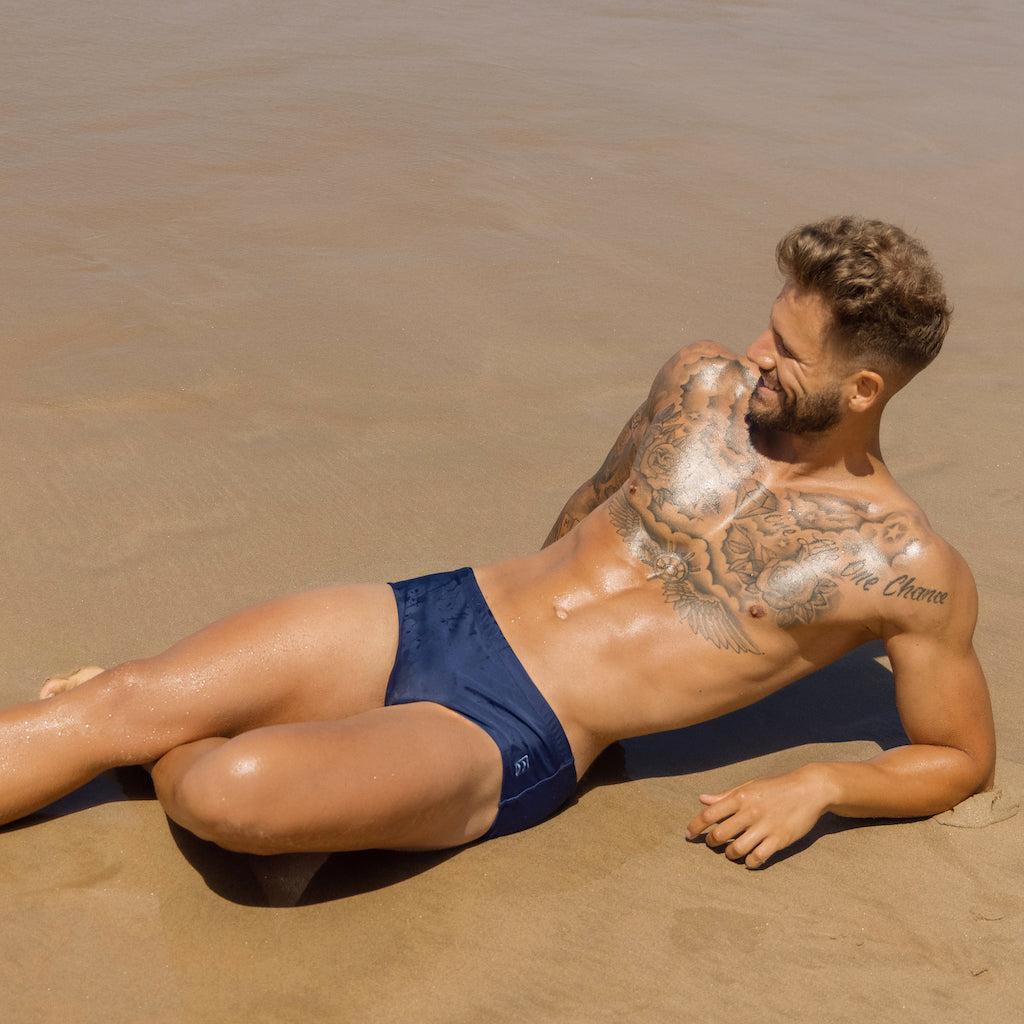Let's start with the short story: the Portuguese word sunga literally translates as swim trunk. Voila!
Ok, now the long one. Everything started in the 1860s with the first swimsuits; however, getting anything close to our current swim trunks took a long time.
Two things played contributing factors: First, take swimmer and subsequent actor Johnny Weissmuller back in 1932. In portraying Tarzan, he became the first human being freed from the upper part of the old-style bathing suit.
The second factor, the World War – and the consequent fabric scarcity – would finish doing the job, consecrating the swimming trunks as a male bathing suit. Or at least something similar to swim trunks since the cut was much closer to boxer shorts.

Gradually, new technologies were incorporated into fabric manufacturing, which caused a considerable revolution in swimwear, so designs closer to the current sunga date back to the '60s. However, the unique Brazilian take on the garment has a slighter, flatter shape and a looser waistline than a Speedo or swim trunk.
Cariocas – a word used to refer to Rio de Janeiro locals – of all ages proudly wear sungas on beaches such as Copacabana or Ipanema. Because of this, the sunga is perhaps the truest embrace of the Carioca soul, offering a sense of freedom and belonging that transports you to Ipanema, no matter how or where you wear them.
Want to hear more from us? Sign up to our newsletter to receive exclusive offers and a 15% discount on your first order.
